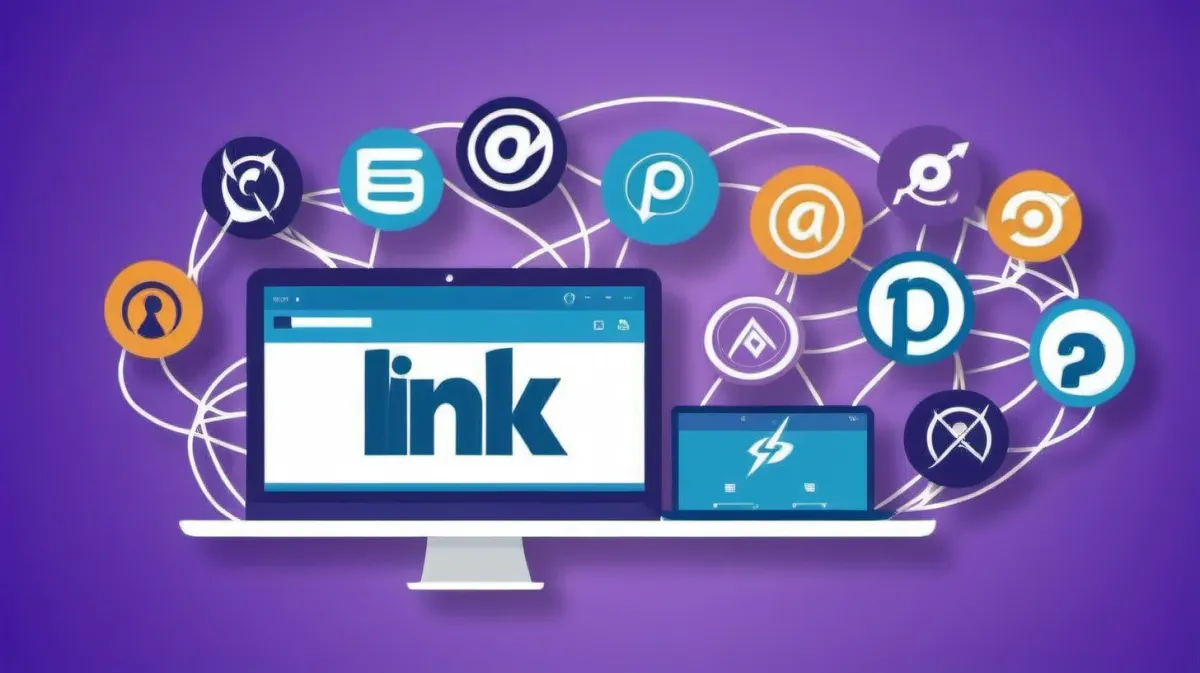Seamless Navigation: How to Choose the Best Internal Link Plugin?

Internal linking has become an essential aspect of SEO, and for good reason. It not only helps guide your website visitors to more relevant and useful content, but it also plays a crucial role in improving your search engine rankings.
However, with the vast number of internal link plugins available, it can be overwhelming to choose the best one for your website.
In this article, we will explore the importance of internal linking for SEO and guide you on how to choose the best internal link plugin features for your website.
Internal Linking For SEO
Internal linking refers to the practice of linking one page of your website to another page within the same domain.
It is an important aspect of SEO, as it helps search engines crawl and index your website more effectively. Furthermore, it also helps in establishing a hierarchy of pages, making it easier for visitors to navigate through your website, and emphasizing the significance of choosing effective SEO link software.
This, in turn, leads to longer on-site durations and a lower bounce rate, which are factors that search engines consider when determining the relevance and usefulness of a website.
Here's why internal linking matters:
Enhanced Crawling and Indexing
Page Authority Distribution
Keyword Relevance
Reduced Bounce Rates
To effectively utilize internal linking for SEO, you should focus on creating a logical and organized structure. This means linking relevant pages together and using descriptive anchor texts that accurately reflect the content of the linked page. It is also important to avoid over linking and ensure a balance between internal and external links, including effective CMS-compatible internal linking solutions for optimal website navigation and SEO performance.
Internal Linking Structure

Before we delve into choosing the best internal link plugin, it's important to understand the basics of internal linking structure. The key components of internal linking structure are:
Hierarchy And Organization
Your internal links should follow a logical hierarchy and organization. This means that your most important pages should have the most internal links pointing to them, and you should be mindful of the performance impact of link plugins to ensure optimal website functioning.
Anchor Text Optimization
Anchor text is the clickable text in a hyperlink. It's important to optimize your anchor text for both users and search engines. Make sure your anchor text is descriptive and relevant to the page it is linking to.
Relevance And Context
The internal links you add should be relevant to the content and context of the page. This not only helps with user experience but also helps search engines understand the relevance of your pages and improve your website's SEO.
Balancing The Number Of Internal Links
While internal links are important, it's also crucial to not overdo it. Too many internal links can be overwhelming for the user and may even be seen as spam by search engines, while under-linking might limit the discoverability of your content. Aim for a balance between providing enough relevant links and not cluttering your content with too many links.
Site Architecture
Lastly, when choosing an internal link plugin, consider the overall architecture of your website. Some plugins may work better for certain site structures, while others may not be as effective. It's important to choose a plugin that best fits your website's needs.
Benefits Of Internal Linking Plugins

Efficiency And Time Savings
One of the main benefits of using internal linking plugins is the efficiency and time savings it offers. With just a few clicks, you can easily add relevant internal links to your content. This saves you the hassle of manually searching for and adding links, allowing you to focus on creating quality content.
Consistent Linking Structure
Internal linking plugins also ensure a consistent and organized linking structure throughout your website. This not only helps in improving the user experience but also makes it easier for search engines to crawl and index your site.
Dynamic Link Suggestions
Another advantage of using internal linking plugins is the ability to suggest dynamic links based on your content. This means that the plugin will recommend relevant internal links to add, making the process even more efficient for evaluating user-rated link plugins and choosing effective SEO link software.
Anchor Text Optimization
Anchor text plays a crucial role in internal linking. With internal linking plugins, you can easily optimize your anchor text for better search engine rankings. You can choose to use exact match or partial match anchor text, making your internal links more effective and relevant.
Automated Maintenance And Updates
Internal linking plugins also offer automated maintenance and updates. This means that if you make changes to your content, the plugin will automatically update the internal links, saving you the hassle of manually editing them.
How To Use Internal Linking Plugins Effectively?
After establishing the benefits of internal linking plugins, you must learn how to use the best internal linking tools for SEO to boost website navigation and enhance SEO. Here’s the way!
Install And Activate The Internal Linking Plugin
The first step is to choose and install an internal linking plugin that is compatible with your content management system (CMS). Most major CMS platforms have a variety of internal linking plugins available, so be sure to choose one that meets your specific needs, including conducting an internal linking plugin comparison for optimal results.
To install the plugin, go to your CMS dashboard and navigate to the 'Plugins' section. Click on 'Add New' and search for the internal linking plugin of your choice. Once you have found it, click on 'Install' and then 'Activate' to activate the plugin, all while testing internal link plugins for CMS to ensure optimal performance.
Configure Plugin Settings
After activating the plugin, you will need to configure its settings. This will vary depending on the plugin you have chosen, but most will have options to customize the linking patterns, anchor texts, and the number of links per page. It is important to choose settings that align with your overall internal linking strategy and provide the best user experience.
Define Internal Linking Strategy
Before you start using the plugin, it is crucial to define a clear internal linking strategy. This involves identifying relevant pages to link to, establishing anchor texts, and creating a linking hierarchy. A well-defined strategy will ensure that your internal links are effective in guiding users through your website and improving your SEO, including tips on selecting optimal internal link software.
Review And Optimize Link Suggestions
Once you have configured the plugin and defined your strategy, it will start suggesting potential internal links for your content. It is important to review these suggestions and make any necessary optimizations. Consider the relevance, quality, and placement of the suggested links to ensure they enhance the user experience and align with your strategy.
Monitor And Update Regularly
Internal linking is an ongoing process that requires regular monitoring and updates. Be sure to regularly check for broken links, update your internal linking strategy as needed, and make use of any new features or updates to your chosen plugin, especially when testing internal link plugins for CMS.
How To Choose The Best Internal Link Plugin?

When it comes to choosing an internal link plugin, there are a few key factors to consider. Let's take a closer look at each of them.
Compatibility With Your CMS
The first and most important aspect to consider is compatibility with your content management system (CMS). Not all internal link plugins are compatible with all CMS platforms. Therefore, it is crucial to ensure that the plugin you choose is compatible with your specific CMS. Some popular CMS platforms include WordPress, Drupal, and Joomla. Each of these has its own set of requirements and specifications. Make sure to read the plugin's description and check for any compatibility issues before making a decision.
Features And Customization Options
Another important aspect to consider is the features and customization options offered by the plugin. Look for features such as automatic internal linking, custom anchor texts, and the ability to exclude certain pages or posts from being linked. These features can help you tailor the plugin to suit your specific needs. Consider your website's structure and content strategy to determine which features would be most beneficial for you.
User Reviews And Ratings
User reviews and ratings are valuable sources of information when it comes to choosing the best internal linking tools for SEO. They provide insights into the plugin's performance, ease of use, and customer support. Make sure to read both positive and negative reviews to get a well-rounded understanding of the plugin's capabilities.
Performance And Impact On Site Speed
One of the main concerns with using external plugins is their potential impact on site speed. It is essential to choose a lightweight plugin that does not slow down your website. Look for plugins that have been optimized for speed and performance impact of link plugins. You can also run speed tests before and after installing the plugin to see if there is any noticeable difference.
Trial And Testing
Before finalizing your choice, it is crucial to test the internal link plugin on your website. Most plugins offer a free trial period, which allows you to test its compatibility and performance. Take advantage of this trial period and thoroughly test the plugin before making a decision. Create a checklist of features and requirements to ensure that the plugin meets all your needs.
Click, Link, Win - Discover The Magic Of Internal Linking With Linkbot!
Internal linking is crucial for website navigation and SEO. But with so many plugins available, how do you choose the best one? Look for user-friendly interface, customizable options and compatibility with your website. And for an effortless solution, try Linkbot - the magic of internal linking.
This is an internal linking automation tool, sets you free from manual work, sos you can easily create a seamless navigation experience for your website visitors.
FAQs About Choosing the Best Internal Link Plugin
Can I Use Linkbot With Any Content Management System (CMS)?
Linkbot is designed to be compatible with various CMS platforms. Make sure to check the specific compatibility information provided by Linkbot for seamless integration, especially when conducting an internal linking plugin comparison for effective SEO link software.
Is Linkbot Suitable For Small Business Websites Or Is It More Geared Towards Larger Sites?
Linkbot is versatile and can be beneficial for websites of all sizes. Its features and customization options make it adaptable to the unique needs of small businesses as well as larger, more complex sites, offering one of the best internal linking tools for SEO.
How Does Linkbot Handle Anchor Text Optimization For Internal Links?
Linkbot allows you to customize anchor text, providing flexibility in optimizing anchor text with link tools. You can strategically choose and modify anchor text to align with your content and keyword strategy.
Will Using Linkbot Impact My Website's Loading Speed?
Linkbot is designed to be efficient and optimized for performance. While individual website configurations may vary, Linkbot is committed to minimizing any negative impact on site speed to ensure a smooth user experience.
Can I Track The Performance Of Internal Links Created Using Linkbot?
Yes, Linkbot typically offers analytics or reporting features to help you monitor the performance of your internal links. This allows you to assess the effectiveness of your internal linking strategy and make informed adjustments as needed, including guidance on selecting optimal internal link software.
